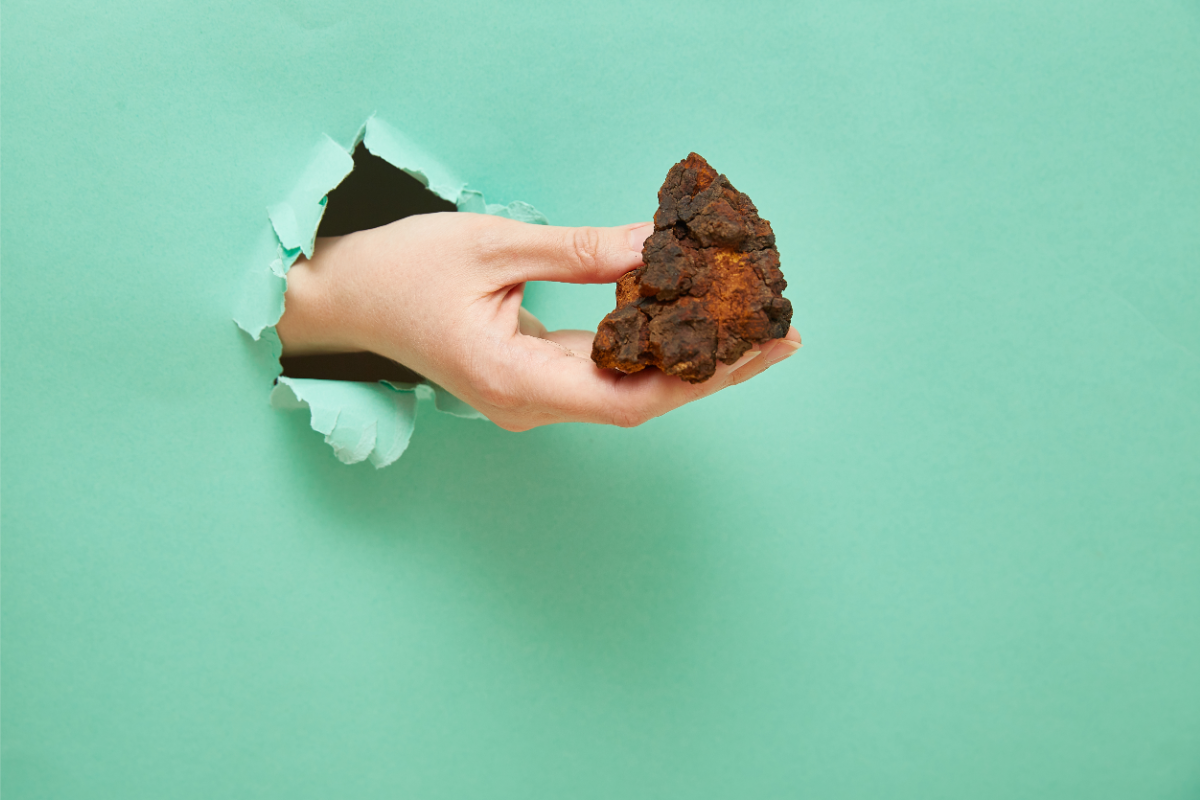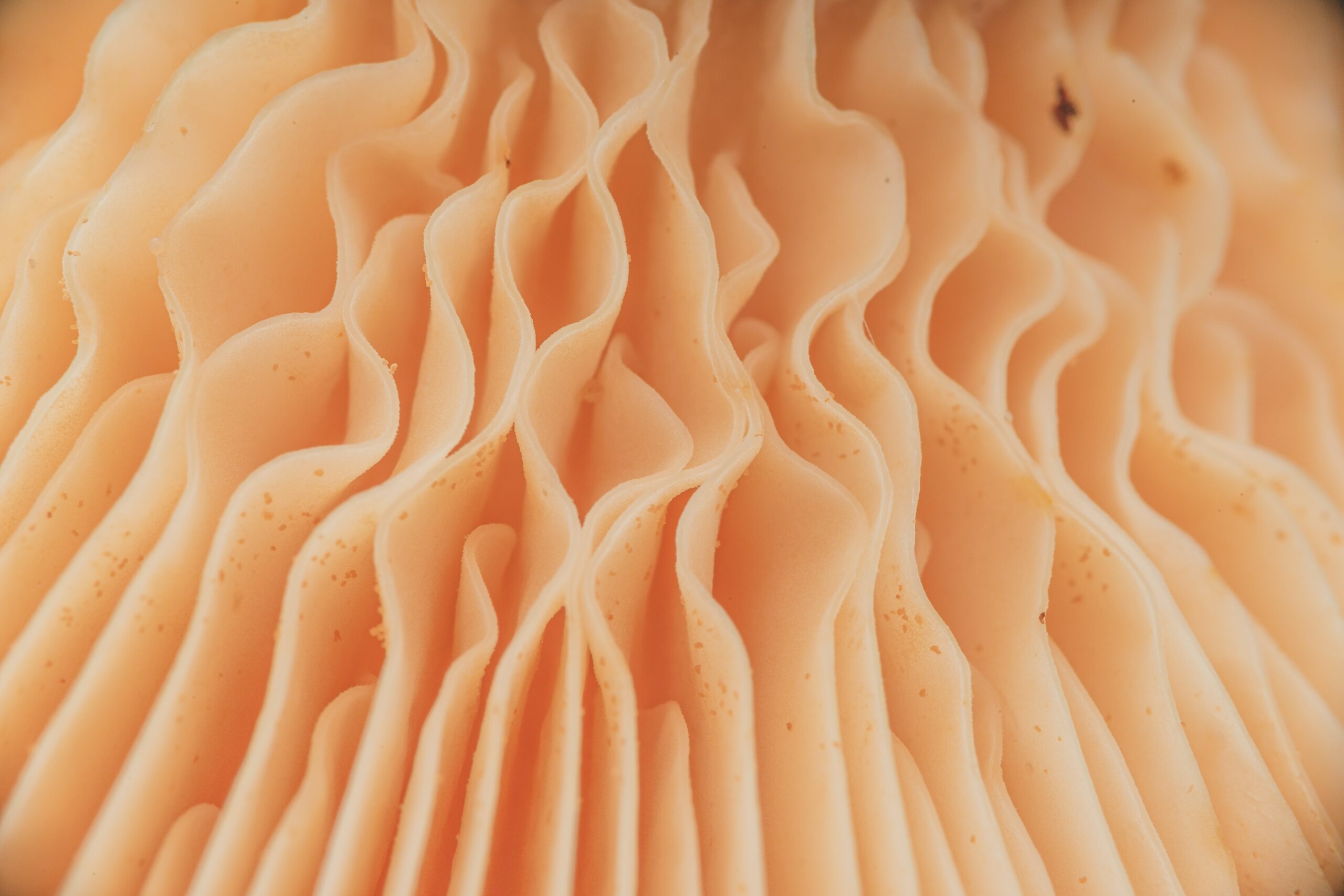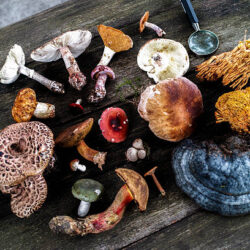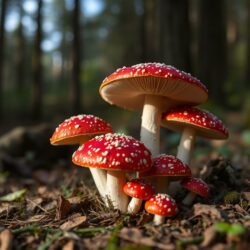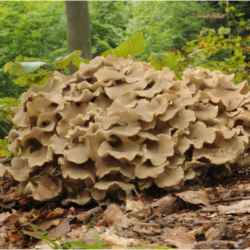Chaga(Inonotus obliquus), nicknamed the black pearl or diamond of the forest, is a mushroom with multiple virtues, highly prized in the medicinal traditions of Northern Europe and Siberia. Thanks to its antioxidant properties and essential nutrients, it is now attracting the attention of the modern world as a promising food supplement.
What is Chaga?
Chaga(Inonotus obliquus) is a rare fungus that grows on birch trees, mainly in the cold forests of Siberia and Northern Europe. It is often mistaken for a growth on the tree, due to its black, charcoal-like appearance. However, it is inside this mushroom that its most precious treasures lie: polysaccharides and bioactive compounds that give Chaga its incredible antioxidant properties.
Chaga has been used for centuries in Russian and Nordic folk medicine traditions. In Siberia, it was consumed as an infusion to treat various ailments, in particular to boost the immune system and detoxify the body. Russian Nobel Prize winner Alexander Solzhenitsyn also contributed to its fame in the West with his book Cancer Pavilion, published in 1968, in which he wrote about this mushroom.
What are the active compounds and benefits of Chaga?
Chaga’s virtues are due to a unique combination of nutrients and bioactive compounds:
- Polysaccharides: These are responsible for the immune-modulating activity of the mushroom, stimulating and balancing the immune system.
- Betulinic acid: This compound, derived from birch, is renowned for its anti-cancer and anti-inflammatory effects.
- Inotodiol: Another triterpene found in Chaga, known for its antiviral and anti-tumour properties.
- Beta-glucans: These polysaccharides help regulate cholesterol and reduce inflammation.
Chaga is also rich in minerals such as calcium, iron, copper and zinc, essential nutrients for a healthy metabolism.
Boosts the immune system
Chaga is renowned for its immunomodulating effects. The polysaccharides present in this mushroom have been shown to stimulate the body’s natural defences. A study conducted on immunocompromised mice revealed that the aqueous extract of Inonotus obliquus restored the immune system after 24 days of treatment, notably by stimulating the production of specific immune cells and increasing the production of cytokines, which are essential for regulating immune responses.
In addition, the lignin complexes extracted from Chaga were shown to increase the phagocytic activity of macrophages, immune cells that play a key role in eliminating pathogens and debris.
Antioxidant properties
Chaga is rich in antioxidants and melanin, two essential components in the fight against free radicals. Free radicals are responsible for cell oxidation, a process that can lead to premature ageing and serious illnesses such as diabetes and cardiovascular disease.
In vitro studies have shown that Chaga can moderate the effects of reactive oxygen species (ROS) by protecting cells against oxidative damage. In addition, Chaga ‘s free radical scavenging activity has been shown to be more effective than that of ascorbic acid (vitamin C), demonstrating its potential to reduce oxidative stress.
Anti-inflammatory effect
Chaga has also shown promising effects in reducing inflammation. The betulinic acid and triterpenes contained in this mushroom help to reduce the body’s inflammatory responses. In animal models, administration of Inonotus obliquus extracts has been shown to reduce inflammation associated with chronic diseases such as inflammatory bowel disease.
In addition, Chaga has been shown to modulate inflammatory responses via the controlled production of cytokines, which could help to alleviate the symptoms of serious inflammatory diseases.
Digestive and cardiovascular support
The beta-glucans present in Chaga are known for their ability to regulate cholesterol levels, particularly LDL (bad) cholesterol. A study carried out on rats fed a high-fat diet showed that Chaga helped to reduce blood cholesterol and triglycerides, while limiting lipid oxidation caused by free radicals.
This mushroom could therefore play a key role in preventing cardiovascular disease by maintaining a healthy lipid profile. These beneficial effects on cardiovascular health add to the long list of potential benefits of this functional mushroom.
How should Chaga be eaten?
Chaga is traditionally consumed as an infusion. Here are the main ways to incorporate it into your daily routine:
- Infusion: The most common method involves boiling powdered chaga in hot water to extract its beneficial compounds. It is advisable to consume this infusion regularly to benefit from its long-term effects.
- Concentrated extracts: Chaga extracts are available in liquid or powder form, and are often standardised to ensure a constant concentration of polysaccharides, terpenes and other active compounds.
Mushroom coffee: Why put mushrooms in my coffee?
Mushroom coffee combines traditional coffee with functional mushroom extracts, adding extra benefits to your daily drink. Mushrooms such as Chaga, Reishi and Lion’s Mane are rich in antioxidants, adaptogens and nutrients that support the immune system, improve concentration and reduce stress. Unlike conventional coffee, which can cause caffeine spikes followed by fatigue, mushrooms help to stabilise energy, offering a longer-lasting boost without unwanted side-effects such as anxiety or palpitations.
Precautions and contraindications
- Effects on blood sugar levels: Chaga can lower blood sugar levels, so it’s essential to consult a health professional before taking it, especially if you’re being treated for diabetes.
- Drug interactions: Chaga may interfere with certain medications, particularly those that affect the immune system or blood clotting. As a precaution, talk to your doctor before considering a Chaga-based treatment.
Sources
- The pharmacological potential and possible molecular mechanisms of action of Inonotus obliquus from preclinical studies
- Staniszewska J, Szymański M, Ignatowicz E: Antitumor and immunomodulatory activity of Inonotus obliquus. Herba Pol, 2017
- Xue J, Tong SS, Wang ZR, Liu P: Chemical characterization and hypoglycaemic activities in vitro of two polysaccharides from Inonotus obliquus by submerged culture. Molecules, 2018
- https://healing-mushrooms.net/chaga

